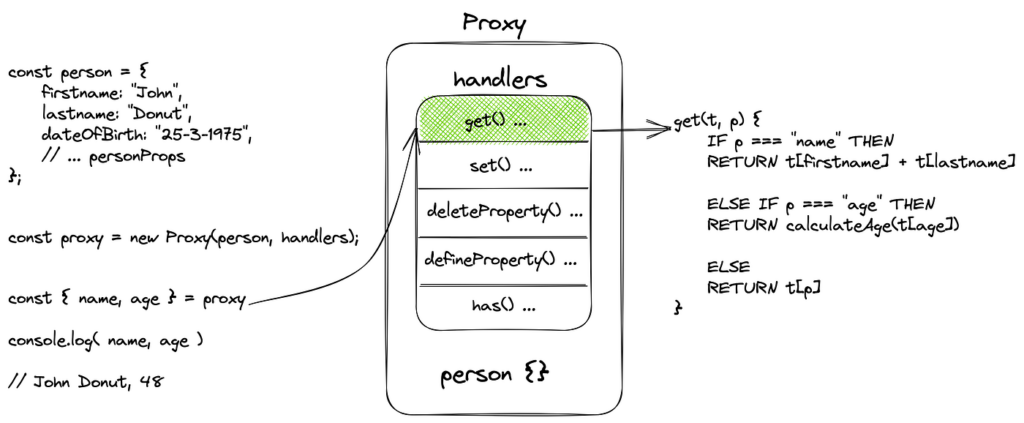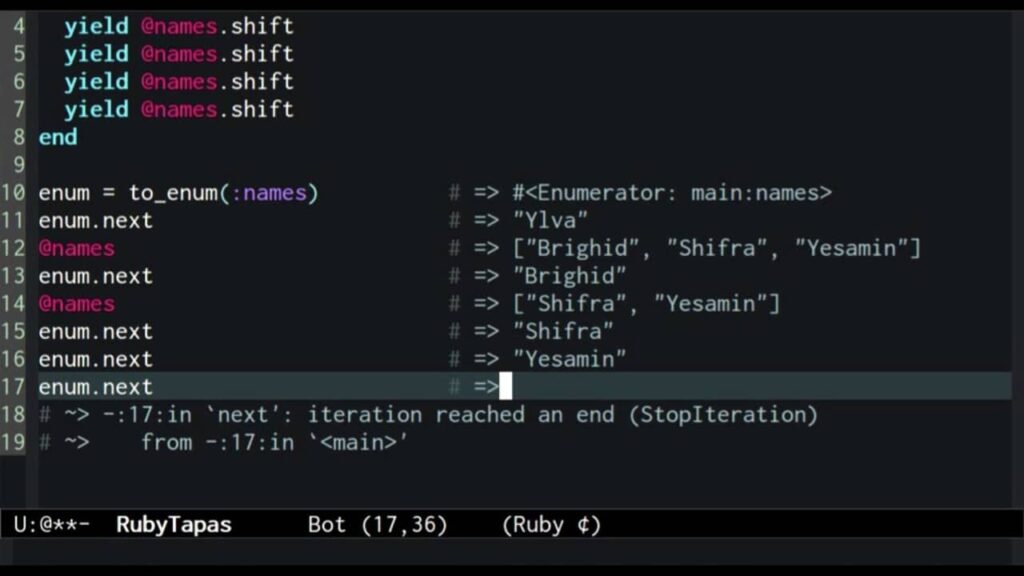Programming languages have a way of surprising even the most seasoned developers with their hidden features.
Take Python’s contextmanager decorator, for example, which streamlines resource management, saving you from tedious setup and teardown routines.
But what if you could uncover more of these gems to simplify your workflow and boost productivity?
The answer lies in the uncharted territories of your favorite programming languages – and a closer look might just reveal the secret to taking your coding skills to new heights.
Python’s contextmanager Decorator
The Power of Contextmanager
When working with resources like files or network connections in Python, ensuring they’re properly cleaned up after use is crucial. This is where the contextmanager decorator comes into play.
By leveraging this decorator, you can create runtime contexts that guarantee clean-up actions are performed after the context is exited, freeing you from worrying about manual resource closure or tedious try-finally blocks.
Streamlining Code with Contextmanager
The contextmanager decorator enables you to define a generator that yields control at the desired point, then resumes where it left off when the context is exited. This allows you to craft elegant, exception-safe code that’s both efficient and readable.
By automating clean-up actions, you can focus on the logic of your code, rather than its underlying plumbing. This leads to more Pythonic code that’s easier to maintain and understand.
Efficient Resource Management
One of the key benefits of using contextmanager is its ability to ensure resources are properly released, even in the face of exceptions.
This eliminates the need for cumbersome try-finally blocks, making your code more concise and efficient. By using contextmanager, you can write code that’s more resilient and better equipped to handle unexpected errors.
Improved Code Readability
By abstracting away the details of resource management, contextmanager helps improve code readability.
With the decorator handling clean-up actions, your code becomes more focused on its core logic, making it easier for others to understand and maintain. This, in turn, leads to more collaborative and efficient development processes.
Best Practices for Using Contextmanager
To get the most out of contextmanager, it’s essential to use it judiciously. This means applying the decorator to resources that require explicit clean-up actions, such as files or network connections.
Additionally, consider using contextmanager in conjunction with other Python features, like the with statement, to create robust and efficient code. By following these best practices, you can harness the full potential of contextmanager and write more effective, Pythonic code.
JavaScript’s Proxy Object

The Proxy object in JavaScript is a powerful tool for creating a layer of abstraction between your code and the objects it interacts with.
By using a Proxy, you can intercept and modify the behavior of an object without altering the object itself. This allows you to add functionality such as logging, validation, or caching without cluttering the original object’s code.
One of the key benefits of using Proxies is that they enable you to decouple your code from the underlying object, making it more modular and easier to maintain.
This abstraction also enables more flexible and scalable coding practices. For example, you can use Proxies to create read-only or write-only views of an object, or to implement lazy loading.
In addition to their benefits for modularity and scalability, Proxies also provide a way to implement aspect-oriented programming (AOP) concepts in JavaScript.
AOP is a programming paradigm that focuses on providing a way to define functions that ‘cut across’ multiple objects and functions, such as logging or security checks. By using Proxies, you can implement these cross-cutting concerns in a way that’s modular and reusable.
Proxies can also be used to implement a variety of design patterns, such as the Facade pattern or the Adapter pattern.
The Facade pattern provides a simplified interface to a complex system, while the Adapter pattern provides a way to adapt an existing object to a new interface. By using Proxies, you can implement these patterns in a way that’s flexible and modular.
In terms of best practices for using Proxies, it’s generally a good idea to use them sparingly and only when necessary. Overusing Proxies can lead to performance issues and make your code harder to understand.
It’s also important to carefully consider the trade-offs between using Proxies and other approaches, such as modifying the underlying object directly. By carefully evaluating these trade-offs and using Proxies judiciously, you can take advantage of their benefits while minimizing their drawbacks.
C#’s yield return Statement
C#’s yield return statement is a powerful tool for implementing cooperative multitasking in your code.
By using this statement, you can write methods that produce a series of results over time, rather than computing them all at once and returning them in an array or list.
This approach enables you to write more efficient and scalable code that doesn’t consume excessive memory or CPU resources.
When you use the yield return statement, you’re implementing an iterator method, which returns an IEnumerable or IEnumerator type.
As the caller enumerates over the results, your method will resume execution from where it left off, producing the next result in the sequence. This capability simplifies writing asynchronous code, allowing you to create methods that yield control back to the caller at specific points.
To get the most out of the yield return statement, you need to understand how it works under the hood. When the caller enumerates over the results, the runtime creates an instance of the iterator class, which manages the state of the iteration.
As the iterator produces each result, the runtime stores the state of the iteration, allowing the method to resume execution from where it left off.
One of the key benefits of using the yield return statement is that it allows you to implement lazy loading, where results are only computed when they’re needed.
This approach is particularly useful when working with large datasets or complex computations. By delaying the computation of results until they’re needed, you can write more efficient code that reduces memory consumption and improves performance.
The yield return statement is also useful when implementing asynchronous programming patterns, such as asynchronous data processing or asynchronous I/O operations.
By using this statement, you can write methods that yield control back to the caller at specific points, allowing other tasks to run in the meantime. This approach enables you to write more scalable and responsive code that can handle multiple tasks concurrently.
When writing iterator methods, it’s essential to consider the implications of using the yield return statement on the caller’s code.
Because the iterator method yields control back to the caller at specific points, the caller’s code must be designed to handle the asynchronous nature of the iteration.
This may require using asynchronous programming patterns or designing the code to handle the iterator’s asynchronous behavior.
To write effective iterator methods, you should also consider the performance implications of using the yield return statement.
While this statement can improve performance by reducing memory consumption and improving responsiveness, it can also introduce overhead due to the creation of iterator objects and the management of iteration state.
By carefully designing your iterator methods and considering the performance implications, you can write efficient and scalable code that takes advantage of the yield return statement.
Java’s Steward Class
When working with resources like database connections, file handles, or network sockets, it’s crucial to ensure they’re properly released when no longer needed to prevent memory leaks.
This is where Java’s Steward class comes in – a guardian for managing resources and preventing memory leaks.
The Steward class provides several methods to manage resources effectively. For instance, the acquire() method acquires the resource and returns it to the caller, while the release() method releases the resource when it’s no longer needed. The tryAcquire() and tryRelease() methods attempt to acquire and releasethe resource, respectively, returning true if successful.
Additionally, the close() method closes the resource and releases any underlying resources.
To use the Steward class effectively, it’s essential to understand the importance of resource management in Java. When resources aren’t properly released, they can cause memory leaks, leading to performance issues and even crashes.
By utilizing the Steward class, developers can ensure that resources are handled correctly, reducing the risk of memory-related problems.
In the context of database connections, for example, the Steward class can be used to manage connections to the database.
By acquiring a connection using the acquire() method, performing the necessary operations, and then releasing the connection using the release() method, developers can ensure that connections aren’t left open indefinitely.
The Steward class also provides a way to handle exceptions that may occur during resource acquisition or release.
By using the tryAcquire() and tryRelease() methods, developers can handle exceptions and ensure that resources are properly released, even in the event of an error.
Ruby’s Enumerator Class

Ruby’s Enumerator Class is a powerful tool for iterating over collections and objects. By creating an enumeration of a collection’s elements, you can process them one by one, which is particularly useful when dealing with large datasets or streams of data. This approach minimizes memory usage and improves performance.
One of the key benefits of using Enumerator is its flexibility. You can use methods like next and peek to fine-tune your iteration logic, allowing you to write more efficient loops.
For example, you can use next to skip over elements that don’t meet certain conditions, or peek to check the next element without consuming it.
Enumerator also provides a range of other methods that can be used to customize your iteration. For instance, you can use rewind to reset the enumeration to its starting point, or each to iterate over the elements in a more traditional way.
By combining these methods, you can create complex iteration logic that’s both efficient and easy to read.
Another advantage of using Enumerator is its ability to work with a wide range of data sources. Whether you’re working with arrays, hashes, or even external data streams, Enumerator can help you iterate over the data in a flexible and efficient way.
This makes it a valuable tool in your Ruby toolkit, ready to be leveraged whenever you need it.
In addition to its flexibility and efficiency, Enumerator also provides a number of other benefits. For example, it can help you simplify your code by eliminating the need for explicit loops and indices.
This can make your code easier to read and maintain, and can also help you avoid common pitfalls like off-by-one errors.
When working with Enumerator, it’s also worth considering the use of Enumerator::Lazy. This is a special type of Enumerator that only loads elements as they’re needed, rather than loading the entire collection upfront.
This can be particularly useful when working with large datasets, as it can help reduce memory usage and improve performance.


















